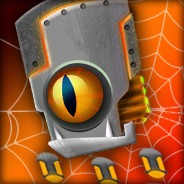Поставьте глагол в нужной форме
Robert Goddard
(be) born in 1882. When he was a child, he
(become) interested in firecrackers and
(think) about the possibility of space travel. He later
(become) a physics professor at a university. In his free time, he
(build) rockets and
(take) them to a field, but they didn’t fly. When he
(go) back to his university after his
(fail) attempts, the other professors
(laugh) at him. In 1920, Goddard
(write) an article about rocket travel. He
(believe) that one day it would be possible to go to the moon. When The New York Times
(see) his article, a reporter
(write) that Goddard had less knowledge about science than a high school student. Goddard
(want) to prove that The New York Times
(be) wrong. In 1926, he built a ten-foot rocket,
(put) it into an open car, and
(drive) to his aunt’s nearby farm. He put the rocket in a field and lit the fuse. Suddenly the rocket went into the sky. It travelled at 60 miles per hour (mph) to an altitude of 41 feet. Then it
(fall) into the field. The flight lasted 2½ seconds, but Goddard was happy about his achievement. Over the years, his rockets
(grow) to 18 feet and flew to 9,000 feet in the air. No one
(make) fun of him after he was successful. When Goddard
(die) in 1945, his work did not stop. Scientists continued to build bigger and better rockets. In 1969, when the American rocket Apollo 11 took the first men to the moon, The New York Times wrote: “The Times regrets the error.”
Ответы на вопрос:
Robert Goddard was born in 1882. When he was a child, he became interested in firecrackers and thought about the possibility of space travel. He later became a physics professor at a university. In his free time, he built rockets and took them to a field, but they didn’t fly.
When he went back to his university after his failed attempts, the other professors laughed at him. In 1920, Goddard wrote an article about rocket travel. He believed that one day it would be possible to go to the moon. When The New York Times saw his article, a reporter wrote that Goddard had less knowledge about science than a high school student. Goddard wanted to prove that The New York Times was wrong.
In 1926, he built a ten-foot rocket, put it into an open car, and drove to his aunt’s nearby farm. He put the rocket in a field and lit the fuse. Suddenly the rocket went into the sky. It travelled at 60 miles per hour to an altitude of 41 feet. Then it fell into the field. The flight lasted 2½ seconds, but Goddard was happy about his achievement. Over the years, his rockets grew to 18 feet and flew to 9,000 feet in the air. No one made fun of him after he was successful.
When Goddard died in 1945, his work did not stop. Scientists continued to build bigger and better rockets. In 1969, when the American rocket Apollo 11 took the first men to the moon, The New York Times wrote: “The Times regrets the error.”
Реши свою проблему, спроси otvet5GPT
-
Быстро
Мгновенный ответ на твой вопрос -
Точно
Бот обладает знаниями во всех сферах -
Бесплатно
Задай вопрос и получи ответ бесплатно

Популярно: Английский язык
-
4 вида вопросов к предложениям 1. prague has got a lot of medieval...
 elenavalkova9207.02.2023 16:34
elenavalkova9207.02.2023 16:34 -
Образуйте вопросительную форму предложений. 1. they have a baseball...
 Пташник05.05.2023 06:25
Пташник05.05.2023 06:25 -
Hurry,hurry,come and see! today there s a party,just for me! with...
 Kristino4kaMiy02.07.2021 12:38
Kristino4kaMiy02.07.2021 12:38 -
Напишите на языке мини-рассказ на 6-7 строк на темы the london marathon...
 Marksh24.09.2022 10:11
Marksh24.09.2022 10:11 -
Задать вопрос к выделенному слову ? john came from the usa he will...
 lalaland520.09.2021 07:25
lalaland520.09.2021 07:25 -
Задание: Переведите слова, преобразуй существительное, используя окончания...
 Наночкка20.01.2020 13:28
Наночкка20.01.2020 13:28 -
Английский тема present Perfect ...
 valeryanka9727.11.2021 15:48
valeryanka9727.11.2021 15:48 -
PO 3 Read the text again and answer the questions, 1 When were the...
 ксюша164721.05.2023 05:30
ксюша164721.05.2023 05:30 -
Щет тылы комек керек...
 ЧеТКиЙВсЕУмиЙ15.09.2020 03:24
ЧеТКиЙВсЕУмиЙ15.09.2020 03:24 -
The information....yesterday (to receive)...
 Killeris24.04.2023 09:14
Killeris24.04.2023 09:14

Есть вопросы?
-
Как otvet5GPT работает?
otvet5GPT использует большую языковую модель вместе с базой данных GPT для обеспечения высококачественных образовательных результатов. otvet5GPT действует как доступный академический ресурс вне класса. -
Сколько это стоит?
Проект находиться на стадии тестирования и все услуги бесплатны. -
Могу ли я использовать otvet5GPT в школе?
Конечно! Нейросеть может помочь вам делать конспекты лекций, придумывать идеи в классе и многое другое! -
В чем отличия от ChatGPT?
otvet5GPT черпает академические источники из собственной базы данных и предназначен специально для студентов. otvet5GPT также адаптируется к вашему стилю письма, предоставляя ряд образовательных инструментов, предназначенных для улучшения обучения.
